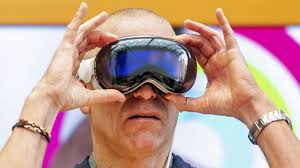Beyond the Hype: Spatial Computing Gets Real as Apple and Meta Battle for the Next Digital Frontier
Editor
Jun 20, 2025
min read
6 views

The dream of the metaverse, a persistent, interconnected set of virtual spaces, has been tempered by a dose of reality since its hype peaked. Yet, in 2025, the underlying technology—now more maturely referred to as spatial computing—is quietly but surely integrating into our lives. No longer just a buzzword for futuristic virtual reality games, spatial computing is emerging as a powerful enterprise tool and the next major battleground for big tech. As industry giants like Apple and Meta refine their hardware and software ecosystems, the focus is shifting from abstract worlds to practical applications that blend the digital and physical realms in meaningful ways.
The market is currently defined by two competing philosophies. On one side is Meta, which continues to invest billions in its vision of an immersive, social metaverse accessible through its popular Quest line of headsets. The Meta Quest 3, with its improved mixed-reality capabilities, has gained significant traction by offering accessible consumer experiences, from gaming to virtual collaboration spaces like Horizon Worlds. Meta's strategy is focused on building a large user base through affordable hardware, hoping to establish a network effect that will make its platform the de facto standard for social VR.
On the other side is Apple, which entered the fray with its high-end Vision Pro headset. Rather than a metaverse, Apple has meticulously branded its approach as 'spatial computing.' The device seamlessly blends digital content with the physical world, controlled by eye, hand, and voice inputs. In 2025, the Vision Pro is finding its footing not as a mass-market consumer device, but as a revolutionary tool for productivity and specialized professional fields. Architects are using it to walk through 3D models of buildings, surgeons are overlaying patient data during complex operations, and designers are collaborating on virtual product prototypes. Apple's strategy is to define the premium end of the market, demonstrating the profound utility of spatial computing and creating a 'halo effect' that will draw developers and, eventually, mainstream consumers into its ecosystem.
"The 'metaverse' was a solution in search of a problem. Spatial computing is a technology finding real problems to solve," notes a technology analyst at Gartner. "In 2025, the enterprise is the primary driver of adoption. We're seeing tangible ROI in areas like training, product design, and remote assistance, where a frontline worker can be guided by an expert from thousands of miles away via a shared virtual view."
This enterprise adoption is fueled by converging technological advancements. The rollout of 5G and Wi-Fi 7 provides the low-latency, high-bandwidth connectivity required for seamless, real-time spatial applications. Advances in hardware, from more powerful mobile processors to higher-resolution displays and more sophisticated sensors, are making headsets lighter, more comfortable, and more capable. The global spatial computing market is now expected to grow at a compound annual growth rate of over 20%, projected to become an industry worth hundreds of billions of dollars by the end of the decade.
However, significant challenges remain. There is no universally accepted operating system or set of standards for spatial computing, leading to a fragmented market of 'walled gardens.' Content created for Meta's platform does not work on Apple's, and vice-versa. This lack of interoperability is a major hurdle for widespread adoption and a point of contention for developers. Organizations like the Metaverse Standards Forum are working to create common protocols, but progress is slow as tech giants vie for control of the nascent platform.
User experience and social acceptance are also critical barriers. The 'digital divide' could expand into a new dimension, separating those who can afford and effectively use spatial technologies from those who cannot. Furthermore, concerns about data privacy are paramount. Spatial computing devices collect vast amounts of sensitive data, including biometric information and detailed scans of users' environments. Establishing robust privacy protections and preventing the misuse of this data is essential for building public trust.
As we look ahead from mid-2025, the battle for the next digital frontier is not about creating a complete escape from reality. It's about enhancing it. The competition between Apple's polished, professional vision and Meta's accessible, social approach is driving innovation across the industry. While the all-encompassing, sci-fi metaverse may still be years away, the age of spatial computing has undeniably begun, and it is poised to fundamentally change how we work, learn, and interact with the digital world.
Editor
League Manager Editorial Team





Leave a Comment